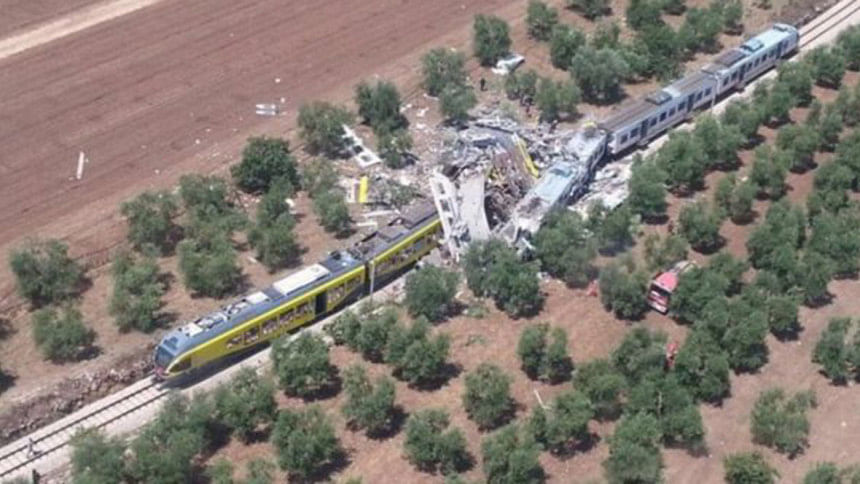Italy train collision 'leaves 20 dead'

Twenty people have been killed and dozens more hurt in a head-on collision involving two passenger trains in southern Italy, officials say.
The two trains were on a single-track line at the time of the crash, between the coastal towns of Bari and Barletta.
Emergency services are trying to free passengers from the wrecked carriages near the town of Andria.
"I think there are many dead," local police chief Riccardo Zingaro told Rai TV.
Some of the carriages were extensively damaged, he said. There were fears the number of deaths could rise still further.
One of those rescued from the wreckage was a small child who was airlifted to hospital.
It was unclear what led to the collision, which happened in good weather at 11:30 local time (09:30 GMT) in the southern region of Apulia.
A local prosecutor in nearby Trani said it was too early to speculate on the cause, although human error was likely to have been a factor.
Italian reports said one of the trains had come from Andria, and the other from Corato, a short distance to the south-east. Both were travelling at high speed.
Both trains had four carriages and images from the fire service showed wreckage strewn across a large area. Some of the carriages were so badly damaged there was little left but debris.
Corato Mayor Massimo Mazzilli said the damage was so extensive it was as if a plane had crashed.
Rescuers set up a field hospital at the scene to help care for the large number of wounded passengers.
Prime Minister Matteo Renzi interrupted a trip to Milan after the crash and returned to Rome.
The line, managed by Ferrotramviaria, is used by thousands of people daily on about 200 trains. Work is under way to make it a double-track line.
Apulia regional leader Mario Loizzo said he was "deeply shaken" by the crash.
Italy's FS state rail operator expressed its condolences to the dead and wounded.
Earlier this year, 11 people died on a single track in southern Germany when two trains collided head-on at Bad Aibling near the Austrian border. Investigators said a signal controller had mistakenly allowed both trains to use the line, disabling an automatic safety system.

 For all latest news, follow The Daily Star's Google News channel.
For all latest news, follow The Daily Star's Google News channel. 








Comments